
PUMPA - SMART LEARNING
எங்கள் ஆசிரியர்களுடன் 1-ஆன்-1 ஆலோசனை நேரத்தைப் பெறுங்கள். டாப்பர் ஆவதற்கு நாங்கள் பயிற்சி அளிப்போம்
Book Free DemoLet us observe the following picture:
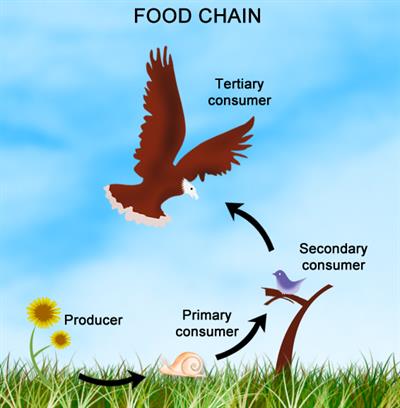
Food chain
In a grassland, the snail eats grass; a bird, in turn, eats the snail for its sustenance. An eagle consumes the bird. As we see in the picture, an ecosystem consists of a chain like relationship between organisms that inhabit the particular ecosystem.
A food chain is the linear flow of energy between various components of the ecosystem.
The organism that takes part at the various biotic levels forms the food chain. The food chain describes how an organism obtains energy and nutrients by consuming other organisms. It depicts the relationship between producers and consumers.
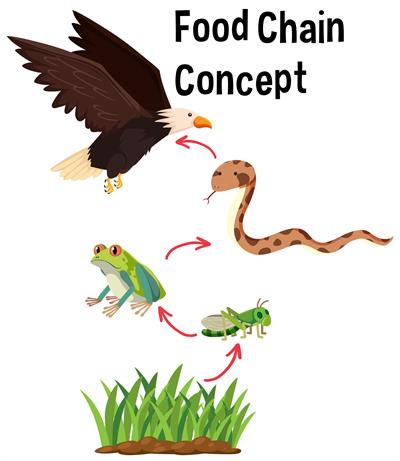
Food chain in a grassland ecosystem
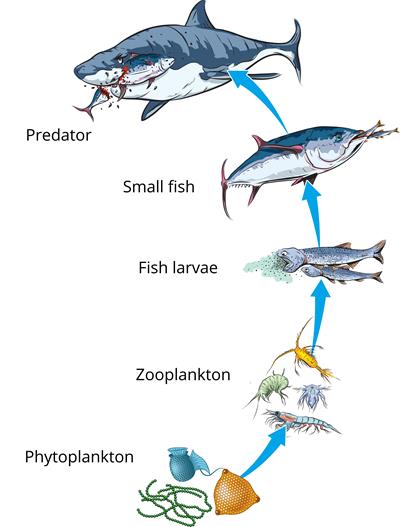
Food chain in an aquatic ecosystem
Importance of food chain:
1. Food chains provide pathways for the passage of food and energy in the ecosystem.
2. Food chains provide information on the ecosystem's living components.
3. Food chains indicates how organisms interact and are interdependent.
4. The food chain assists in studying the effect of population reduction or increase at a trophic level.
5. When a non-biodegradable substance enters a food chain, it will have its concentration increasing as the trophic level rises. The effect of non-biodegradable harmful substances can be studied through the food chain.
Trophic levels:
Each step or the level of the food chain forms a trophic level. In an ecosystem, a trophic level comprises a group of organisms that occupy the same level in a food chain.
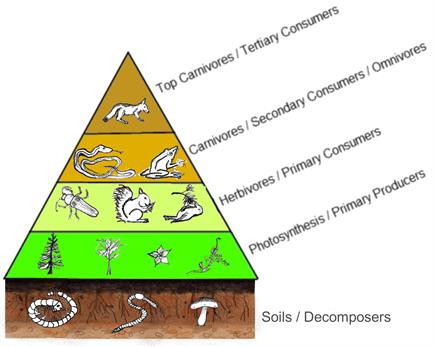
Trophic levels
The two fundamental trophic levels include the producers and the consumers.
Ecological pyramids or energy pyramids also represent the flow of energy from one organism to another. It is a diagrammatic representation of food chains by arranging organisms at various trophic levels.
First trophic level:
The producers or the autotrophs are present at the first trophic level. They are photosynthetic organisms that fix or harvest solar energy into a form used by heterotrophs or consumers. Only \(1 \%\) of sunlight's energy that falls on their leaves transform into food. The number of organisms in the first level is the highest compared to all other levels.
Second trophic level:
Herbivores, or primary consumers, are at the second trophic level. They are lesser in number when compared to the producers. They are directly dependent on the producers for their sustenance. Primary consumers use \(90 \%\) of the energy obtained from producers for biological functions such as locomotion, digestion, reproduction, etc. Only \(10 \%\) of the energy is stored in them and made available to the consumers of the next level.
Third trophic level:
The small carnivores and the omnivores, or the secondary consumers, belong to the third trophic level. They depend on primary consumers and producers for their sustenance. The secondary consumers are lesser in number when compared to the primary consumers.
Fourth trophic level:
The larger carnivores, or tertiary consumers, are at the fourth trophic level. They feed on both the primary and secondary consumers. The tertiary consumers are much lesser than the secondary consumers.
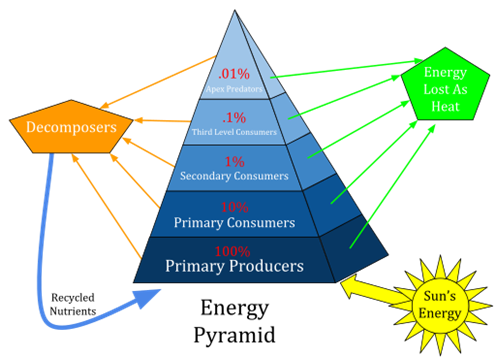
Trophic levels or energy pyramid
Important!
Organisms of one trophic level have the same food habit! Example: Herbivores consumes only plants and thus are the primary consumers.
Reference:
https://www.flickr.com/photos/102642344@N02/9912890523/in/photostream/
https://commons.wikimedia.org/wiki/File:Trophiclevels.jpg
https://commons.wikimedia.org/wiki/File:Ecological_Pyramid.svg